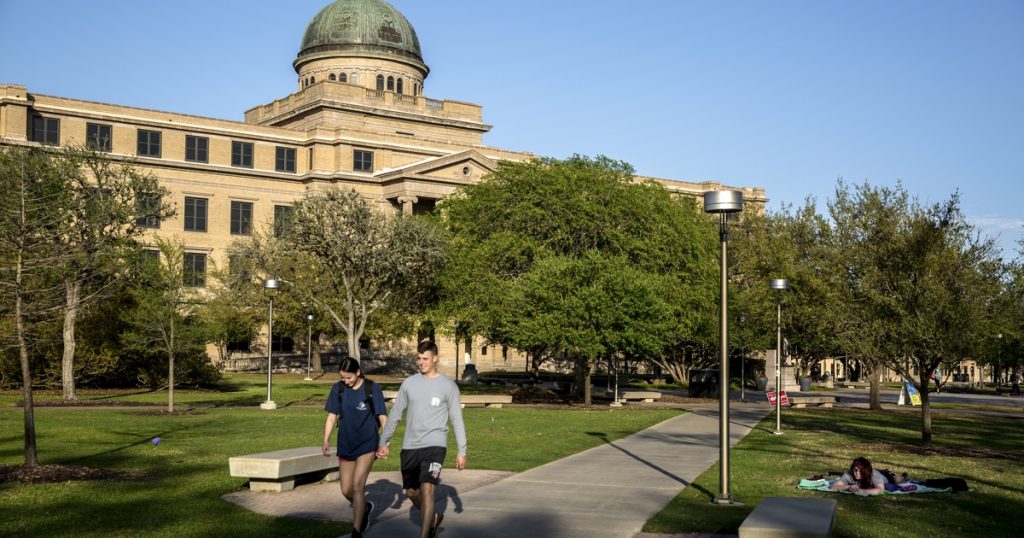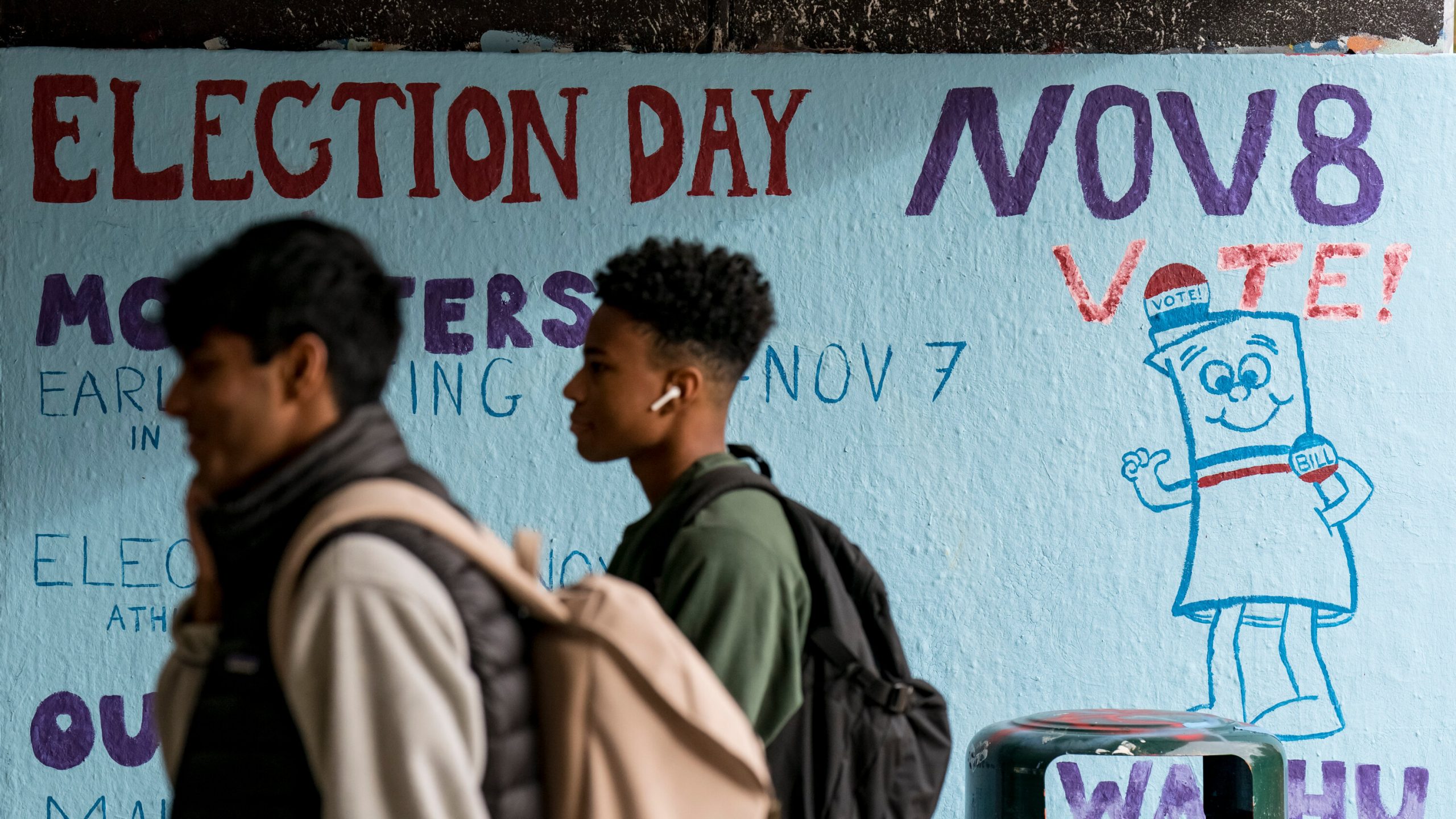By a two-to-one margin, young voters (between the ages of 18 and 29) backed the Democratic Party in the 2022 midterm elections. This significant split for the Democrats, coupled with the second-highest turnout among the 18-29 age bloc in a midterm election, played an essential role in avoiding an expected and historically-consistent wave of losses for the Democrats, who hold the White House. The Democrats expanded their Senate majority (albeit dampened by Kyrsten Sinema leaving to become an independent) and held their ground in competitive House races around the nation.
Despite the Democratic-leaning split during the midterms, the Democratic Party has not always benefitted from a reliable youth bloc. Democratic House candidates won the youth vote over Republicans by just 2 points in 2002, also a midterm year. What changed has been driven by a more politically engaged generation experiencing numerous breaking points—including the climate crisis, the COVID-19 pandemic’s residual effects, the Dobbs v. Jackson decision overturning abortion access, gun violence, inflation, and the war in Ukraine, among other things.
The Reagan Years
On his way to re-election in 1984, Ronald Reagan won voters between 18 and 29 by an 18-point margin. The strong support that Reagan received led to the director of the Democratic Congressional Campaign Committee (DCCC) at the time joking about raising the voting age to 35. Young voters’ support of Reagan was fueled by disappointment from the malaise era economic policy—Democrat Jimmy Carter, who Reagan defeated in 1980, oversaw one of the country’s most significant foreign policy failures with the Iran hostage crisis. Carter was perceived as anti-American, while Reagan was considered a stately figure who advanced the economic interests of young voters.
Modern Priorities
Fast forward to the present day, young voters’ priorities have changed. Rather than a narrow focus on one or two values out of self-interest, young Americans are now more concerned about the cascade of crises that the country and the planet are experiencing. A poll conducted by Harvard Kennedy School’s Institute of Politics published in October 2022, before the midterm elections, showed that inflation (45 percent), abortion (33 percent), and protecting democracy (30 percent) were the top three issues that concerned likely youth voters. Climate change (28 percent) and gun control (22 percent) rounded out the top five issues. This poll reflects the divided concerns of the youth electorate today, with individual voters having different priorities for which issues matter the most to them.
Split priorities, however, did not mean young voters did not view other priorities as a concern for them–many of their priorities had intersectional applications to others. For example, the climate crisis does not affect all racial communities equally. This understanding of priorities being intersectional manifested at the ballot box when young voters coalesced around a slate of candidates who aligned with their priorities. These candidates, by far and large, were Democrats.
In competitive races where candidate differences on these priorities were particularly salient, young voters played a crucial role in delivering a blue victory. For Pennsylvania’s open Senate seat, Democrat John Fetterman ran on a platform that included clean energy and pro-choice points while conceding to a conservative position in suspending the gas tax to provide temporary inflation relief. He was contrasted by Republican Mehmet Oz’s unabashedly conservative platform, which boasted a “100% pro-life” position and denied the scientific consensus on climate change. Young voters broke 70 percent to 28 percent in favor of Fetterman, who edged out Oz in an overall close race and was the only Senate seat to flip from one party to the other of the 2022 cycle. Youth turnout and margins for Democrats helped carry the party to victory in other close races like Georgia’s Senate race, where incumbent Raphael Warnock sought a full term, and Arizona, where Katie Hobbs sought to flip the governor’s mansion to Democratic control.

Source: Texas Tribune
Voter Suppression
When youth turnout has the ability to swing close races, and a hold of a single party over the bloc exists, this creates a breeding ground for voter suppression.
In Texas, only 25 percent of the 18 to 29 age group turned out, a 9-point difference from the 2018 midterms and a 26-point difference from the 2020 election. Activists argue that much of the decline can be attributed to Texas Republicans pushing forward Senate Bill 1, a 2021 law that standardized voting hours, cut voting hours in urban areas, and introduced identification requirements to vote by mail. The law mainly affected college students—many students, including those at Texas A&M University, which enrolls 74,829 students, did not have on-campus access to an early voting polling location. With busy class schedules that vary from student to student, limiting access to polling sites and vote-by-mail ballots in tandem is a surefire way to depress college student voter turnout.
A study by Jesse Richman and Andrew Pate reinforces that increasing barriers to voting decreases turnout among college students. Republicans knew this when they passed SB 1, with 2022 being a testament to the effectiveness of their strategy.
Texas is not the ‘lone star’ state in suppressing the votes of young voters in America. Following the 2010 census with the constitutionally mandated redistricting process, Republicans in North Carolina used their majority to usher in maps that gerrymandered the state to ensure the party would have the best chance of winning as many of the state’s congressional seats as possible.
Through this process, legislators split the campus of North Carolina A&T University, a historically Black institution located in Greensboro, into two congressional districts: the 6th and the 13th. White Republicans represent both districts. The divide of the 13,487-strong HBCU campus diluted the votes of its students into two separate districts—despite the fact that the students formed a community of interest by being enrolled at the same institution. Their votes would be going towards separate candidates in separate districts that could, as intended by Republicans, be outvoted by residents elsewhere in the district. Ultimately the maps were redrawn by order of the North Carolina Supreme Court, and the university was placed into a single community, the 6th. Subsequently, Kathy Manning, a Democrat, was elected.
Misplaced Political Calculus
Although youth voters, especially those in college, voted by a large margin for the Democratic Party at the federal level, that is not always the case for down-ballot races. A bivariate analysis of college precincts and election results in the 2008 election found that there were cases where down-ballot Republicans got more votes in college precincts than non-college precincts. Furthermore, the fifty local elections that were analyzed in the study did not find that Democratic victories were powered solely on college precincts compared to non-college precincts.
The Republican Party has the ability to narrow the gap in the youth vote between its candidates and those of its Democratic counterpart. It may not be able to win a majority of the youth vote in a single election cycle. Still, the party can restore its competitiveness with Gen Z through an investment in a healthy political dialogue rather than suppressing youth votes to intensify the margin in the GOP’s favor. This has been done as recently as 2014 when the College Republican National Committee committed $2 million dollars to field programs focused on turning out college students for that year’s midterm elections.
In the Future
A famous quote goes along the lines of: “If you’re not a liberal when you’re 25, you have no heart, but if you’re not a conservative by the time you’re 35, you have no brain.” As Dr. Kathleen A. Bratton, associate professor of political science at Louisiana State University, explains in a teaching presentation, the correlation between age and conservatism is part of the maturation cycle where greater responsibilities result in greater conservatism.

Source: NBC News
Comparing age and voting patterns between the 2020 and 2004 presidential elections illustrates this connection between maturation and political identity. In 2020, the 30-44 age group backed Democrat Joe Biden over Republican incumbent Donald Trump by a slim 52 percent to 46 percent (a 6-point margin). In 2004, the 18-29 age group backed Democrat John Kerry over Republican George W. Bush by roughly 54 percent to 46 percent (an 8-point margin), showing that there is a 2-point gain for Republicans over this time period from 2004 to 2020. The age groups are compared as the 18-29 age group in 2004 roughly coincides with the 30-44 age group in 2020 when the time elapsed is considered. A 2-point change over a roughly 16-year period is insignificant in raw terms. Still, it does give a maturation cycle some basis, further reinforced in a study that found “political attitudes are remarkably stable over the long term.” However, when political attitudes do shift, “liberals are more likely to become conservatives.”
Using the concept of maturation and comparison of the 2004 and 2020 presidential elections, the shift in Gen Z’s political attitudes is likely to be along the same lines as the generations that came before it–the only difference is that Gen Z is much more Democratic than its predecessors. Republicans have an uphill battle to win over Gen Zers, but Gen Z is not the monolith that Democrats view it as currently–as the party responds (or doesn’t respond) to its priorities, Gen Zers will respond with their votes. Although priorities like inflation, abortion, democracy, the climate crisis, and gun control are most salient with younger voters today, other issues that both the Democratic and Republican parties are out of touch with, like a lack of diversity in political leadership, are also top-of-mind for the bloc. The political leanings of the youth bloc will depend on which party can assemble the most responsive platform to the wide-ranging priorities that Gen Z and other young voters have.
Featured Image: New York Times






Comments are closed.